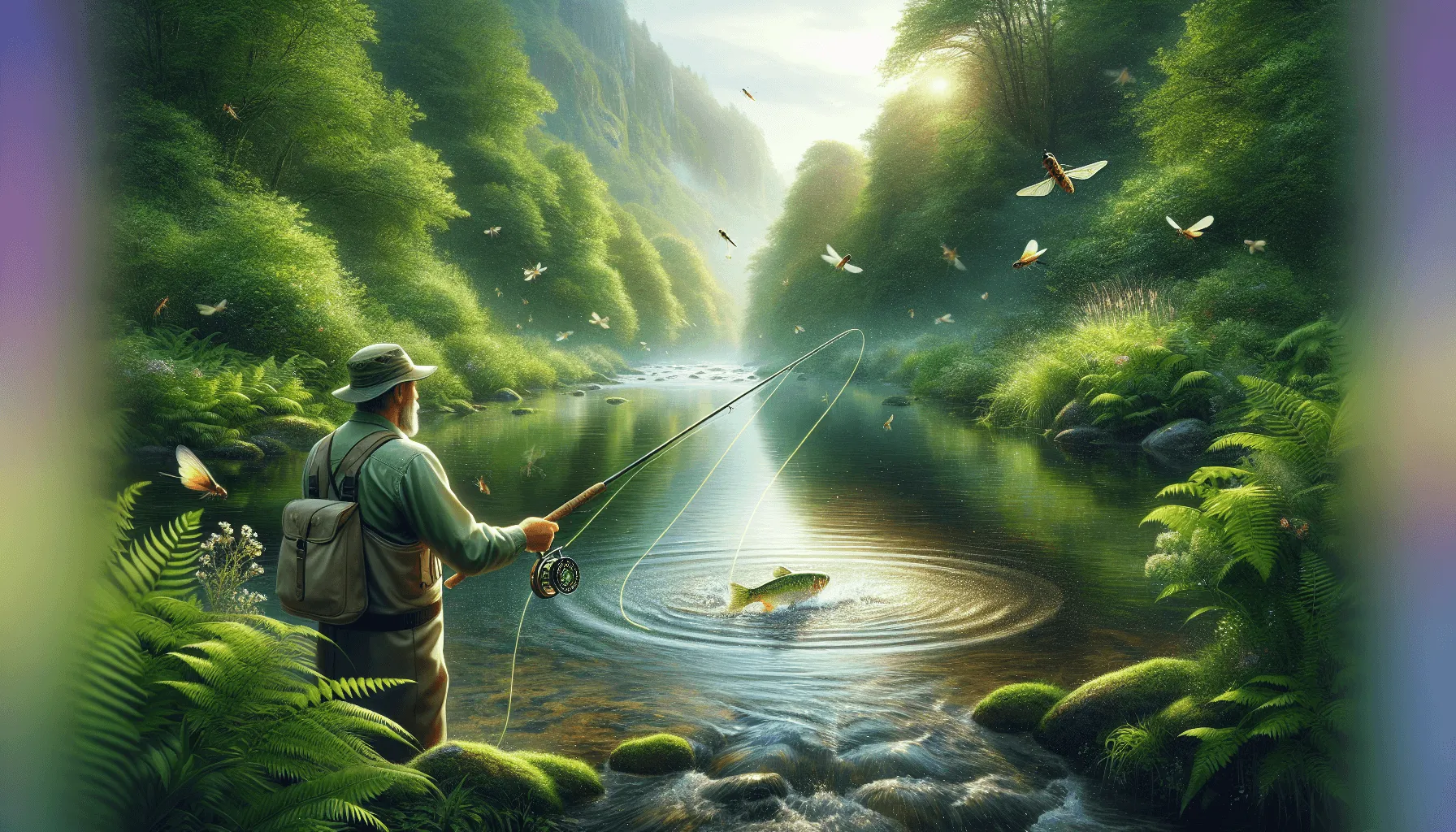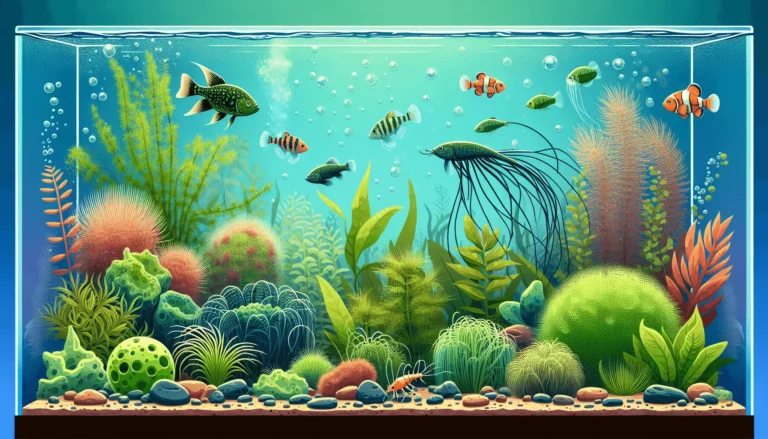Fly fishing is an art, and understanding how to fish an emerger can significantly enhance your success on the water. Emergers, which imitate insects transitioning from their larval stages to adulthood, are a crucial component in fly fishing. When fish are actively feeding on emerging insects, emergers provide an enticing stimulus that traditional dry flies cannot match.
Why are emergers important?
- Effectiveness During Hatches: Emergers are particularly effective during insect hatches when trout feed aggressively.
- Versatility: They can attract fish just below the surface, making them more versatile than dry flies.
- Increased Visibility: Emergers often provide better visibility in the water compared to other fly types.
Why should you understand emergers for successful trout fishing?
- Behavioral Insight: Knowing how trout respond to emerging insects helps you select the right patterns and techniques.
- Enhanced Techniques: Mastering emerger-specific techniques like the dry fly dropper method boosts your catch rate.
- Matching the Hatch: Understanding insect life stages enables you to choose patterns that closely mimic what trout are feeding on.
By mastering these aspects, you’ll be well on your way to becoming a more proficient and successful angler.
Understanding Emergers
Definition and Characteristics of Emergers
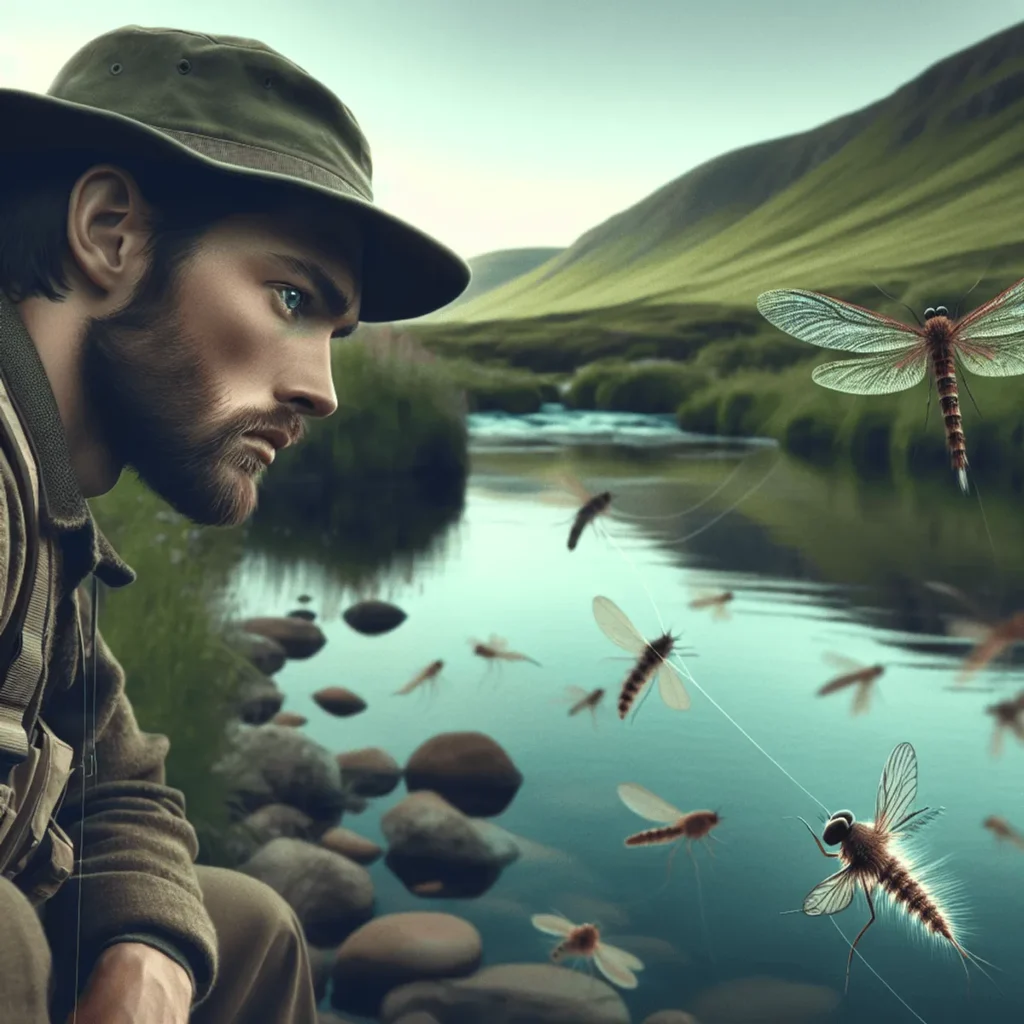
Emergers are a crucial stage in the lifecycle of aquatic insects like midges, mayflies, and caddis. These flies represent the transitional phase when insects move from their larval state to adulthood. During this period, they are highly vulnerable and become prime targets for feeding trout. Emergers typically have features such as partially submerged bodies and trapped air bubbles, which make them particularly enticing to fish.
Read Also: Mastering Mending in Fly Fishing: Techniques & Tips for Success
Lifecycle Stages of Insects
Understanding the lifecycle stages of insects helps you better select and present emergers:
- Midges: These tiny insects go through four stages—egg, larva, pupa, and adult. The pupal stage is when midges rise to the surface to emerge as adults.
- Mayflies: These insects have an egg, nymph, emerger, dun (sub-adult), and spinner (adult) stage. The emerger stage occurs as the nymph rises to the water surface to molt into a dun.
- Caddis: Caddisflies undergo complete metamorphosis including egg, larva, pupa, and adult stages. The pupal stage is critical as it involves swimming to the surface to transform into an adult.
How Trout Respond to Emerging Insects
Trout are acutely aware of emerging insects due to their high nutritional value and vulnerability. When insects are in their emerger phase:
- Feeding Behavior: Trout often position themselves just below the surface film where emergers are most accessible.
- Selective Feeding: Trout may become highly selective during a hatch, focusing on emergers rather than fully emerged or adult insects.
- Surface Activity: Look for subtle rises or dimples on the water surface indicating trout feeding on emergers.
Recognizing these behaviors and matching your techniques accordingly can significantly increase your success rate when fishing with emergers.
Essential Fishing Techniques for Emergers
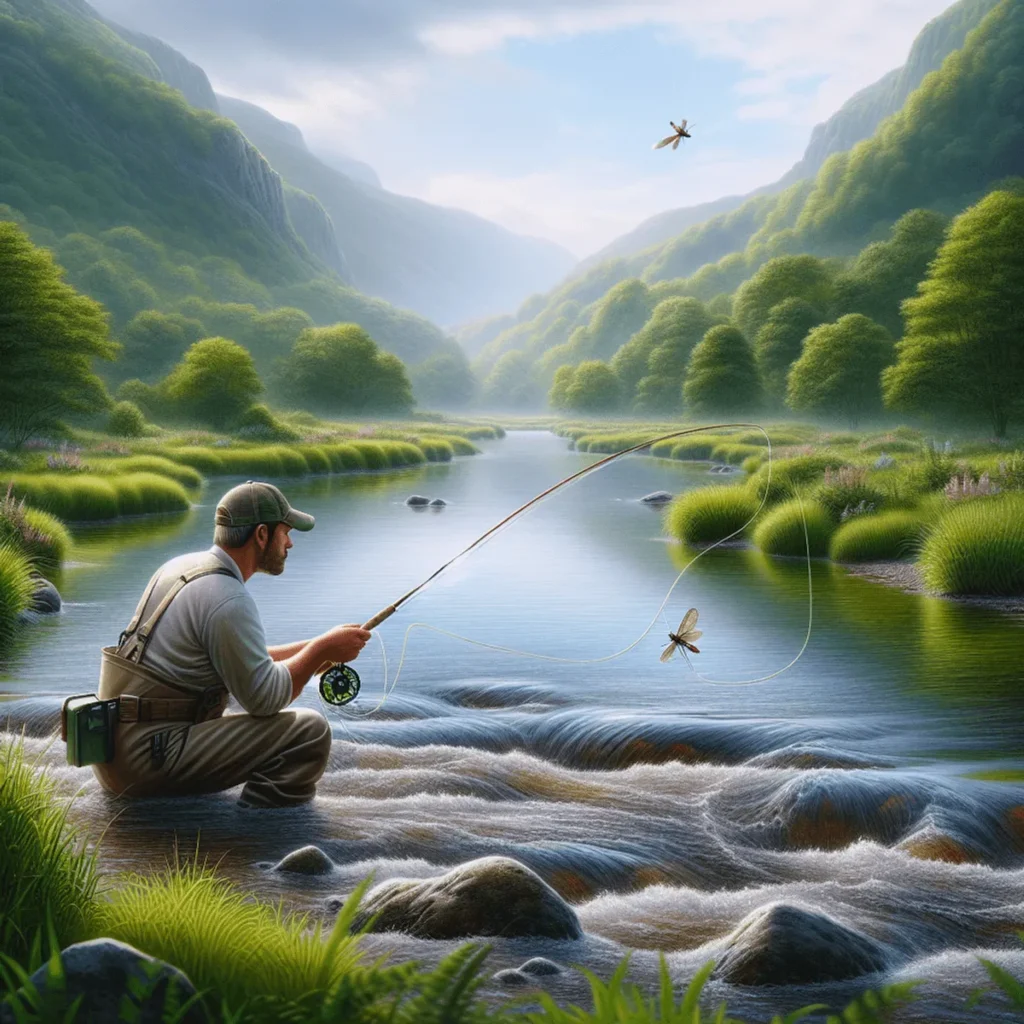
1. Dry Fly Dropper Method
When it comes to fishing techniques for emergers, the dry fly dropper method stands out as a particularly effective strategy. This technique involves using a dry fly as an indicator while trailing an emerger pattern beneath it. This setup allows you to cover both the surface and subsurface feeding zones, increasing your chances of enticing trout.
Advantages of the Dry Fly Dropper Method:
- Versatility: By presenting two different flies simultaneously, you can target fish feeding on both surface and emerging insects.
- Visual Aid: The dry fly serves as a visual indicator, making it easier to detect strikes on the submerged emerger.
- Natural Drift: The emerger drifts naturally just below the surface, mimicking real-life emerging insects that trout find irresistible.
To set up a dry fly dropper rig:
- Select a Buoyant Dry Fly: Opt for patterns like the Elk Hair Caddis or Parachute Adams, which float well and are highly visible.
- Attach the Emerger: Use a piece of tippet (12-24 inches long) to connect the dry fly to an emerger pattern such as the CDC Midge Pupa or Barr Emerger.
- Positioning: Ensure that the emerger hangs just below the surface film, where trout are likely to be feeding on emerging insects.
The dry fly dropper method not only increases your strike detection but also adds variety to your presentation, making it an excellent choice for fishing emergers effectively.
Read Also: How to Get Sponsored for Fishing: Ultimate Guide for Anglers
2. Tight Line Nymphing with Emergers
Another highly effective technique is tight line nymphing. This method provides direct contact with your flies, allowing for immediate strike detection and better control over the drift.
Benefits of Tight Line Nymphing with Emergers:
- Sensitivity: Direct connection enhances sensitivity, enabling you to feel even subtle takes.
- Control: You can manage the drift more precisely, ensuring your emerger moves naturally in the water column.
- Versatility: Works well in various water conditions, from fast riffles to slow pools.
To employ tight line nymphing:
- Short Line Setup: Use a shorter leader (9-10 feet) and a high visibility sighter or indicator.
- Weighted Flies or Split Shot: Add weight to get your emerger down quickly—choose weighted emerger patterns or add split shot above the fly.
- Maintain Contact: Keep tension on the line by holding your rod tip high and following the drift downstream.
Tight line nymphing excels in situations where precise drift control and immediate strike detection are crucial, making it another indispensable technique for fishing emergers successfully.
Selecting the Right Emerger Patterns
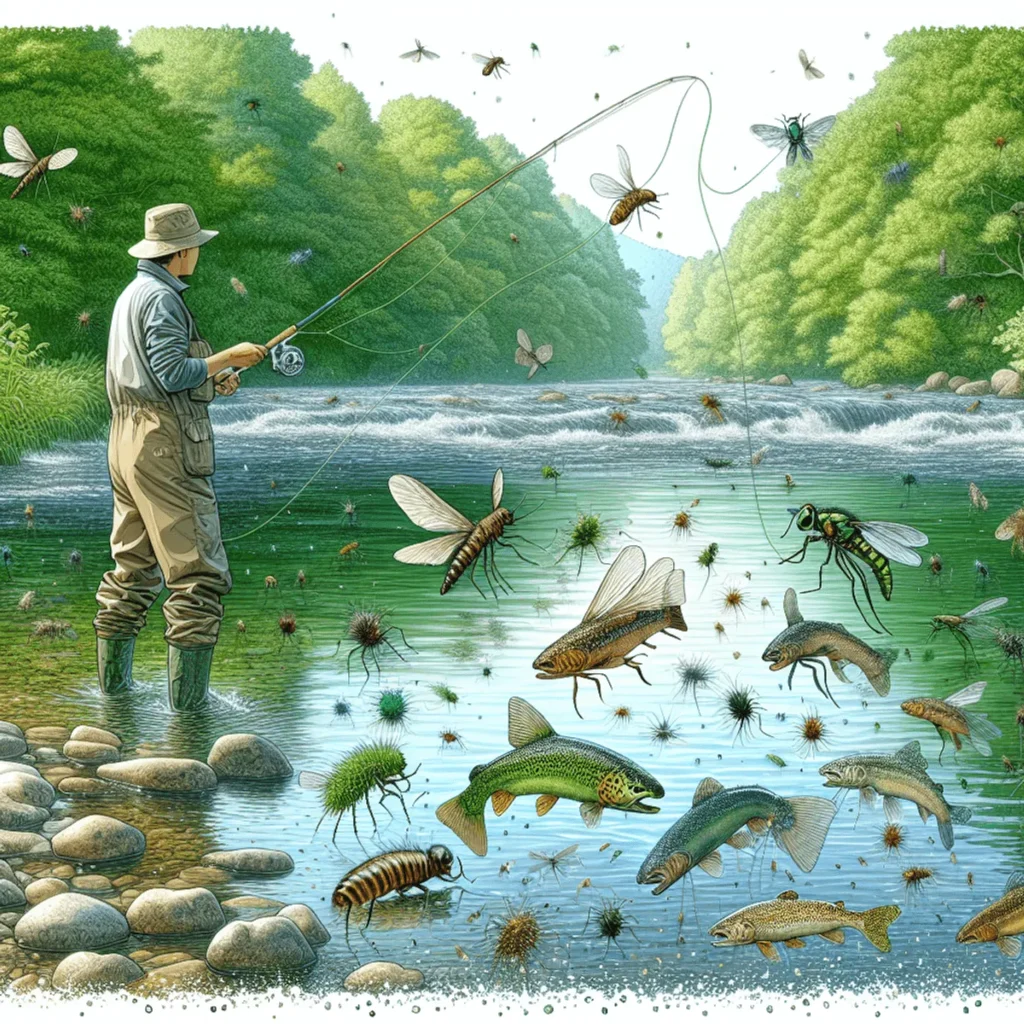
Choosing the right emerger patterns is crucial for attracting trout during different hatches. Here are some of the best emerger patterns you should consider:
- CDC Midge Pupa: Known for its buoyancy and visibility, this pattern mimics midges emerging from their pupal stage. Its CDC (Cul de Canard) feathers provide a lifelike appearance and floatation, making it effective in calm waters.
- Barr Emerger: Versatile and highly effective, the Barr Emerger is designed to imitate mayflies in various stages of emergence. Its slim profile and natural colors make it a go-to choice when fishing during mayfly hatches.
- RS2 (Rim’s Semblance 2): This pattern excels in imitating the emergent stage of various insects, especially mayflies. The RS2’s simple yet realistic design ensures it stays just below the surface, enticing trout that are feeding on emergers.
Matching the Hatch
To maximize your success, you need to match the hatch by selecting patterns based on observed insect activity. Here’s how:
- Observe Insect Activity: Pay attention to what insects are hatching and how they behave. Are they floating on the surface or just beneath it? This information helps you choose between flush-floating and descending-body emergers.
- Study Trout Behavior: Notice how trout are feeding. If they are breaking the surface gently, they might be targeting emergers. Use patterns that mimic these insects’ stage accurately.
Understanding these strategies enhances your chances of successfully fishing with emerger fly patterns. Whether you’re figuring out how to fish a caddis emerger or learning how to tie an emerger fly, matching the hatch remains critical.
Next up, learn about optimal conditions for fishing emergers to refine your techniques further.
Optimal Conditions for Fishing Emergers
Fishing emergers can be especially productive when you pay attention to the best times and conditions. Optimal water temperatures for fishing emergers fall within the 34-70°F range. Trout feeding patterns are often dictated by these temperature ranges, with the most active feeding periods typically occurring in this window.
Environmental Factors Influencing Trout Behavior and Feeding Habits
Several environmental factors significantly impact how trout behave and feed:
1. Water Temperature Effects
Trout activity levels are closely tied to water temperatures. Coldwater species like trout thrive in cooler waters, making early morning or late evening prime times for fishing emergers. However, understanding how to fly fish for trout in the winter can also yield successful results during colder months.
2. Cloud Cover Influence
Overcast conditions can be advantageous as they reduce direct sunlight, making trout feel more secure and likely to feed near the surface. Cloudy days can extend feeding periods throughout the day.
3. Insect Activity
Observing insect hatches is crucial when choosing when to fish with emergers. Pay attention to the lifecycle stages of insects like Midges, Mayflies, and Caddis, as emerging insects often trigger aggressive feeding behavior in trout.
How to Fish an Emerger
Successful emerger fishing involves understanding where and how to present your flies:
- Fish Rising: Keep an eye out for fish rising to take insects from just below the surface film. These rises signal active feeding on emergers.
- Surface Film Fishing: When targeting fish feeding in the film, use patterns that stay just below or flush with the surface. This mimics the natural emergence process of insects.
Combining these environmental observations with appropriate emerger patterns ensures a higher success rate. Recognizing how factors like water temperature, cloud cover, and insect activity influence trout behavior will help you master how to fly fish emergers effectively.
Paying attention to these details enhances your chances of hooking more trout using emerger patterns during their peak feeding times. Additionally, exploring various fishing strategies can further improve your overall fishing success.
Gear and Setup for Fishing Emergers Like a Pro!
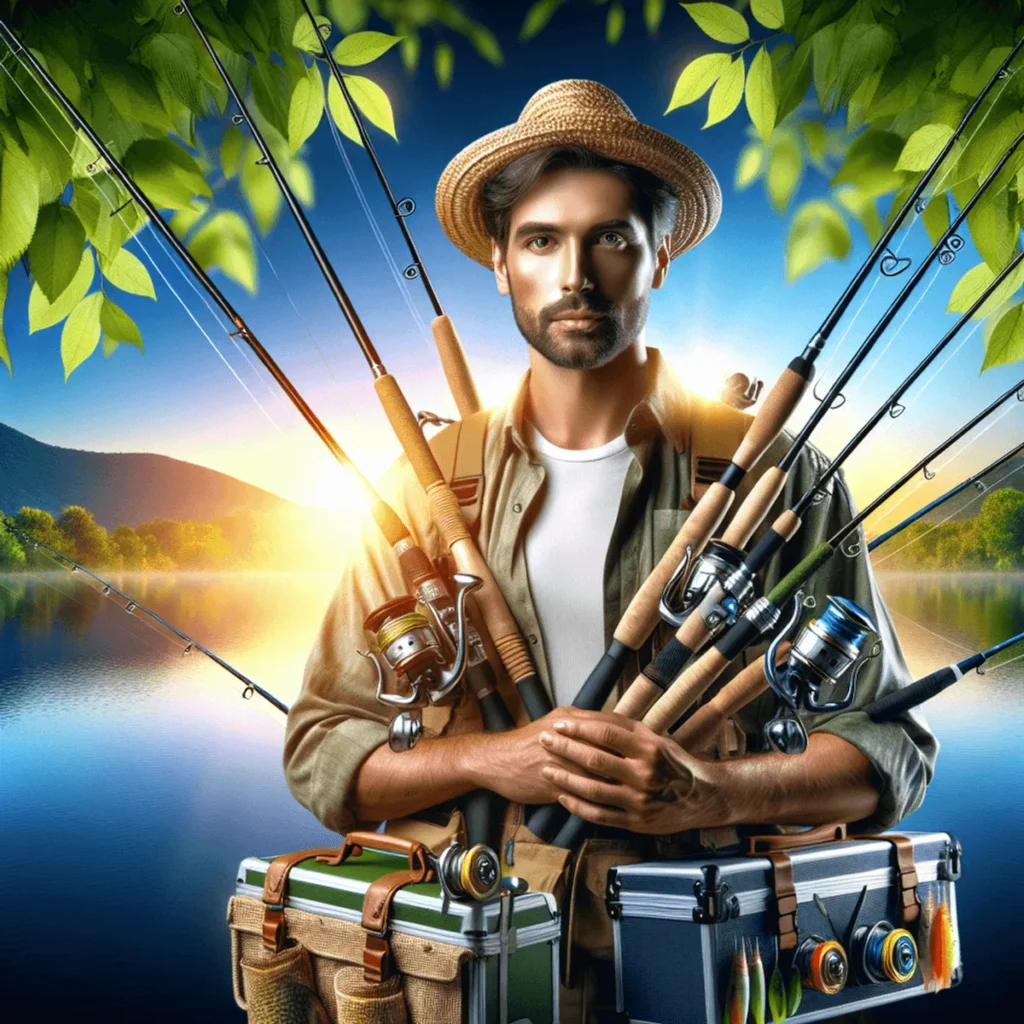
To fish emergers effectively, having the right gear is essential. Here are some recommendations to get you started:
Recommended Gear for Fishing Emergers
- Lighter Rods: Opt for a 4-6 weight rod. This provides the sensitivity needed to detect subtle takes from trout feeding just below the surface.
- Long Leaders: A leader length of 10-12 feet is ideal. Longer leaders help in achieving a natural drift, which is crucial when presenting emerger patterns.
Choosing the Right Tippet Size (5x-7x) for Optimal Presentations
Using the right tippet size can make or break your emerger fishing experience.
- Tippet Size: For emergers, a tippet size range between 5x and 7x is recommended. This finer tippet aids in delicate presentations, reducing the chance of spooking wary trout.
- Knot Selection: A simple clinch knot or improved clinch knot works well with these tippets, ensuring strong connections without compromising on presentation.
Importance of Floatant and How to Apply It Effectively with Emerger Patterns
Floatant plays a critical role in keeping your emerger patterns at the right level in the water column.
- Floatant Types: Gel or liquid floatants are preferred for emergers. These allow you to treat specific parts of your fly.
- Application Tips: Apply floatant sparingly to only the upper part of your emerger pattern. This ensures that the fly rides partially submerged, mimicking an emerging insect accurately.
Fly Box Essentials
Having a well-stocked fly box can increase your chances of success.
Essential Patterns:
- CDC Midge Pupa
- Barr Emerger
- RS2
- Spotlight Caddis Emerger
Each pattern has unique attributes that mimic different stages of insect emergence and cater to various hatches. Carrying a variety of these patterns allows you to match the hatch more effectively.
Investing in quality gear and understanding how to use it optimally will elevate your emerger fishing game. Whether you’re new to fishing emergers or looking to refine your techniques, proper gear setup makes a significant difference on the water.
Conclusion: Mastering Emerger Techniques for Trout Fishing Success!
Practicing these techniques on the water will greatly enhance your fishing experience. Using emergers offers unique advantages that can significantly improve your catch rate.
- Mastering emerger techniques helps you understand and mimic the natural behavior of insects, making your presentations more enticing to trout.
- Emergers bridge the gap between nymphs and dry flies, capturing the attention of fish that are feeding just below the surface.
Embracing these fishing success tips can elevate your skills and bring rewarding results.
FAQs (Frequently Asked Questions)
What are emergers and why are they important in fly fishing?
Emergers are insects that are transitioning from their nymph stage to adulthood, often seen just below the water’s surface. Understanding and fishing emergers is crucial for successful trout fishing because trout actively feed on these insects during their emergence, making them a key food source.
What is the dry fly dropper method and how do I use it to fish emergers?
The dry fly dropper method involves using a dry fly as an indicator while suspending an emerger pattern below it. This technique allows you to present the emerger at the right depth where trout are likely to feed, increasing your chances of a catch.
What are some effective fishing techniques for emergers?
Effective fishing techniques for emergers include the dry fly dropper method and tight line nymphing. The dry fly dropper method uses a visible dry fly to attract trout while presenting an emerger below, whereas tight line nymphing allows for precise control of the emerger’s depth and movement in the water.
How do I select the right emerger patterns for fishing?
To select the right emerger patterns, consider matching the hatch based on current insect activity. Popular patterns like CDC Midge Pupa, Barr Emerger, and RS2 are effective for different hatches. Observing which insects are emerging will help you choose the most effective pattern.
What environmental conditions are optimal for fishing with emergers?
The best times and conditions for fishing with emergers typically fall within a water temperature range of 34-70°F. Factors such as cloud cover, insect activity, and observing fish rising can also indicate when trout are feeding on emergers.
What gear should I use when fishing for emergers?
Recommended gear for fishing emergers includes lighter rods and long leaders to facilitate delicate presentations. It’s also important to choose the right tippet size (5x-7x) for optimal presentations and to apply floatant effectively on your emerger patterns.

